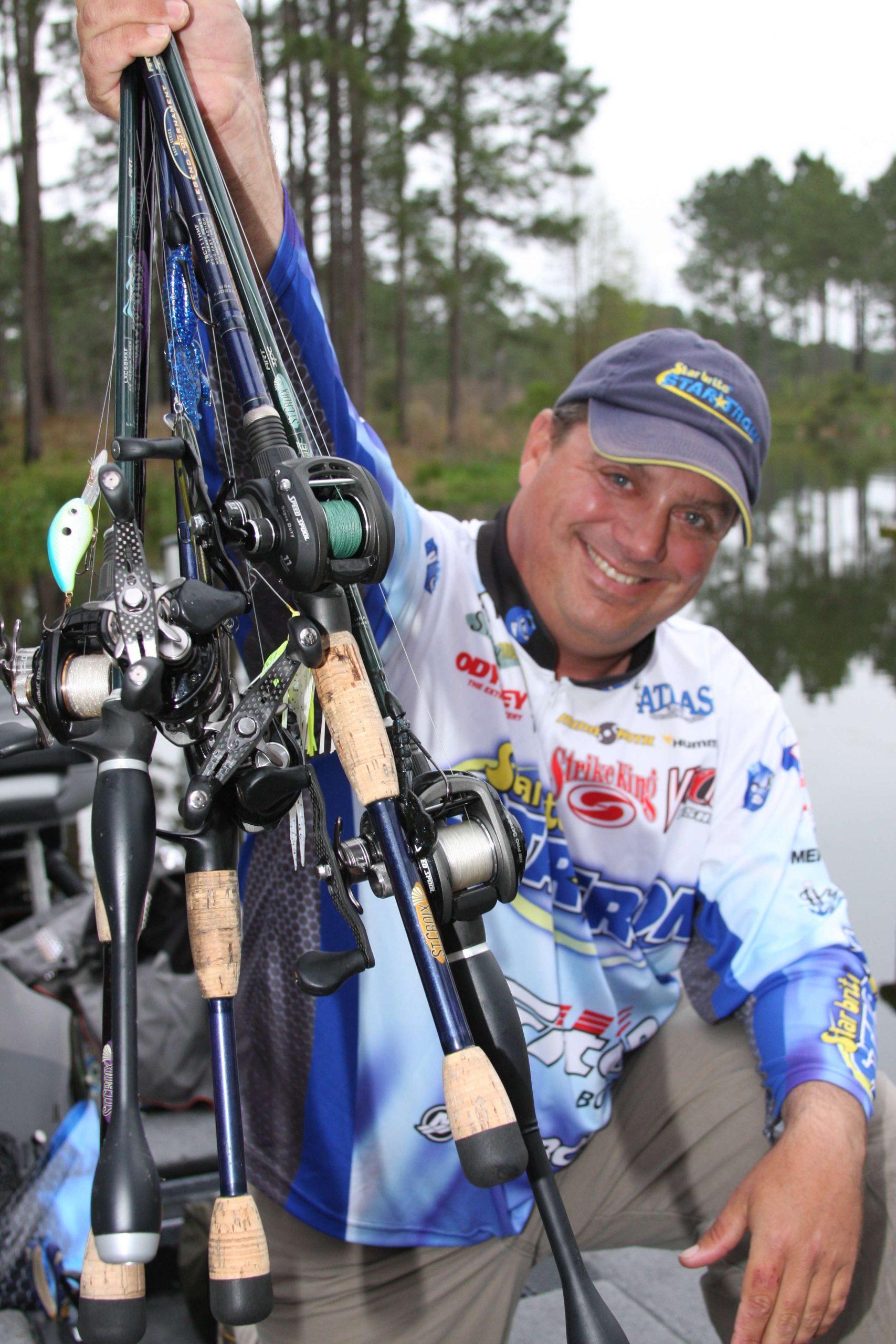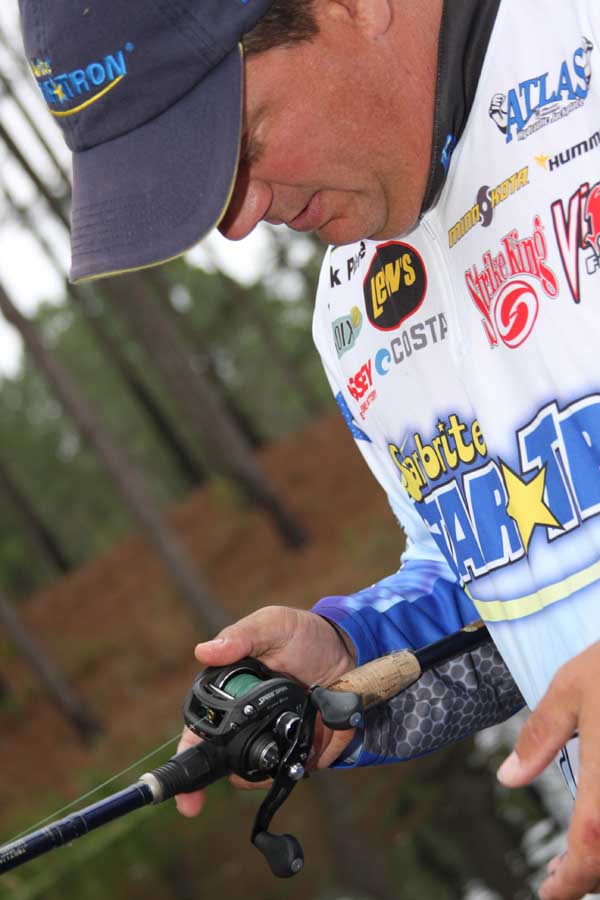
In baseball, there’s often an advantage to throwing with one hand or the other. Second basemen, third basemen, shortstops and catchers are almost exclusively right-handed. First basemen are often left-handed, and a left-handed pitcher who can find the strike zone will always have a place on the roster.
Studies have shown that 90 percent of all people are right-handed and an even higher percentage of baitcasting reels are right-handed models, but you won’t find any of them in Patrick Pierce’s Triton. The Bass Pro Shops Bassmaster Opens pro uses all left-handed models, even though he is naturally right-handed.
“It started when I was a kid,” he says. “My first baitcaster was right-handed, but I started seeing the advantages of using left-handed reels and haven’t used a right-handed model since.”
For Pierce, a Lew’s pro staffer, it makes sense to go lefty for a variety of reasons.
“The most obvious reason for a right-handed angler to use a left-handed casting reel is that you don’t have to change hands after the cast — it’s just more efficient,” Pierce says. “When right-handed anglers use spinning tackle, they use a reel with the handle on the left side. Why not do the same with casting gear?
But it’s more than just efficiency.
“If you’re right-handed, your right hand and arm are naturally stronger and better coordinated than the left,” he points out. “Why do you want your ‘off’ hand controlling your bait, setting the hook and fighting the fish? You only do one thing with the handle of your reel — crank. Why not train your ‘dumb’ hand to do that?”
For anyone ready to argue that it’s not “natural” to turn a reel handle with your off hand, Pierce has a quick response.
“There’s really nothing natural about any of the motions we go through when fishing. They’re all about muscle memory, and that’s learned behavior — not nature.”
The Florida pro also has some tips for getting acclimated to left-handed reels.
“At first it may feel awkward to reel with your left hand,” he admits, “but if you’ll just practice when you’re off the water you’ll get used to it very quickly. You can even sit down in your living room at night and practice while you watch TV.”

Pierce recommends adapting gradually, perhaps by selecting a left-handed reel to use while flippin’ or pitching and going from there.
“I suggest leaving your other reels at home and just taking the left-handed ones,” he says. “When you don’t have another option, you’re forced to adapt. After a day or two, it’ll feel very natural.”
If there’s a con to using left-handed casting reels it’s that many manufacturers don’t offer their full lineup in lefty models.
“That’s changing,” says Pierce. “At Lew’s, most of our reels come in a left-handed version and we have left-handed models that will cover all of your bass fishing needs.”
And if you need another reason to become a baitcasting lefty, Pierce has a great one.
“When my fishing buddies see that all my reels are left-handed, almost no one asks to borrow them.”





